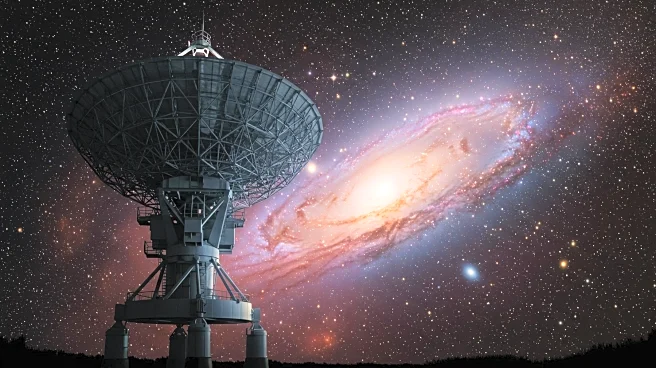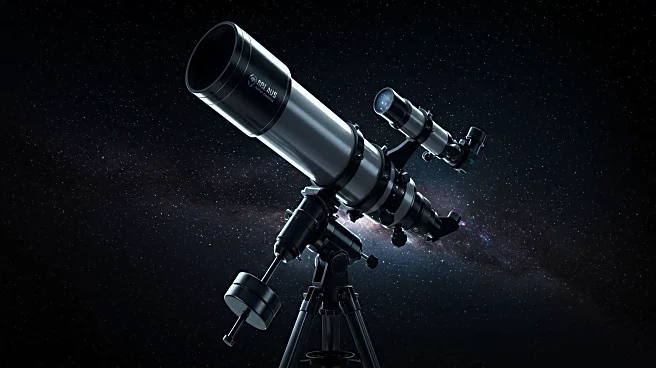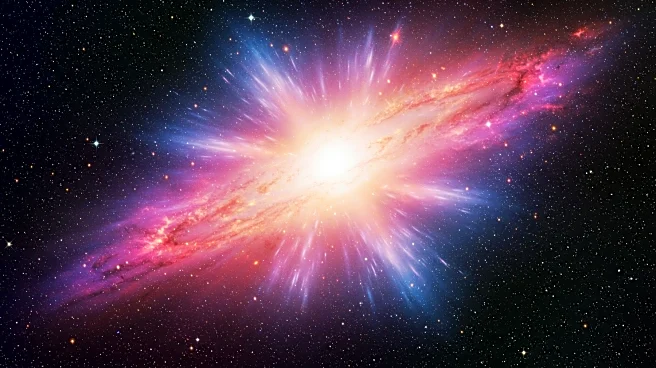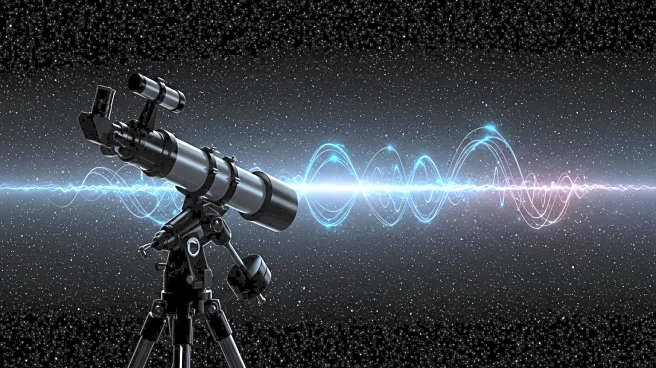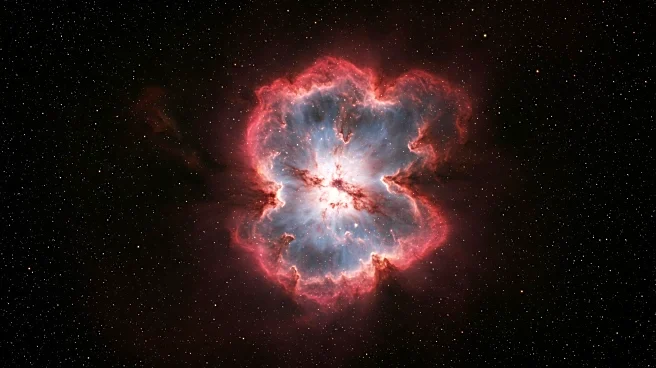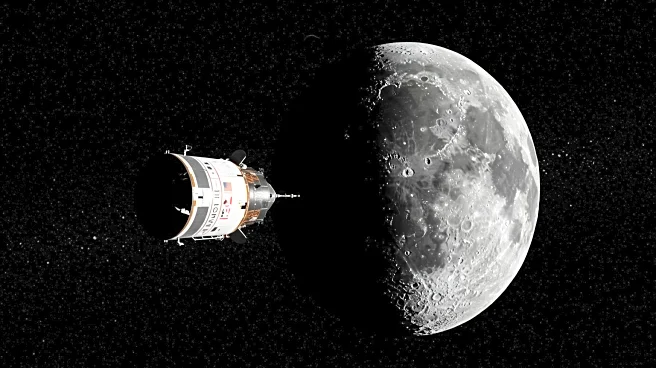What's Happening?
Astronomers from Northwestern University have successfully traced the origin of one of the brightest fast radio bursts (FRBs) ever recorded, named RBFLOAT. This radio wave, detected in March 2025, released energy equivalent to the sun's output over four days and lasted only a few milliseconds. The CHIME radio telescope in Canada, along with a network of smaller stations called Outriggers, played a crucial role in detecting and characterizing the signal. The team pinpointed its origin to a spiral galaxy located 130 million light-years away, in the direction of the constellation Ursa Major. This achievement marks the first time a non-repeating FRB has been localized with such precision, offering new insights into these mysterious cosmic phenomena.
Why It's Important?
The ability to trace the origin of FRBs with high precision is a significant advancement in the field of astronomy. These bursts are believed to originate from extreme cosmic events, such as neutron star mergers or magnetars, and understanding their sources can provide valuable information about the universe's most energetic processes. The success of this research demonstrates the capabilities of the CHIME telescope and its potential to build a comprehensive database of FRBs. This could lead to breakthroughs in understanding the nature and frequency of these events, impacting theories about the universe's structure and evolution.
What's Next?
The research team plans to apply the triangulation technique used for RBFLOAT to future FRB detections. They estimate that CHIME could accurately detect around 200 FRBs per year, significantly expanding the sample size for study. This ongoing research will likely attract further interest and collaboration from the global astronomical community, potentially leading to new discoveries about the origins and implications of FRBs.
